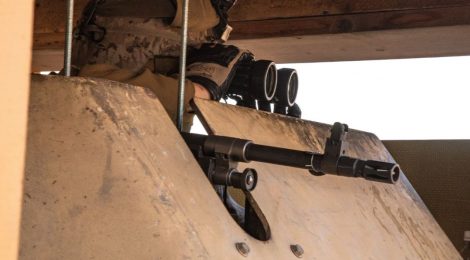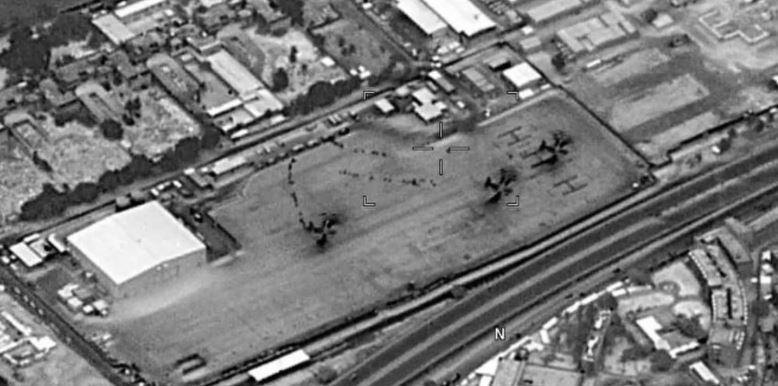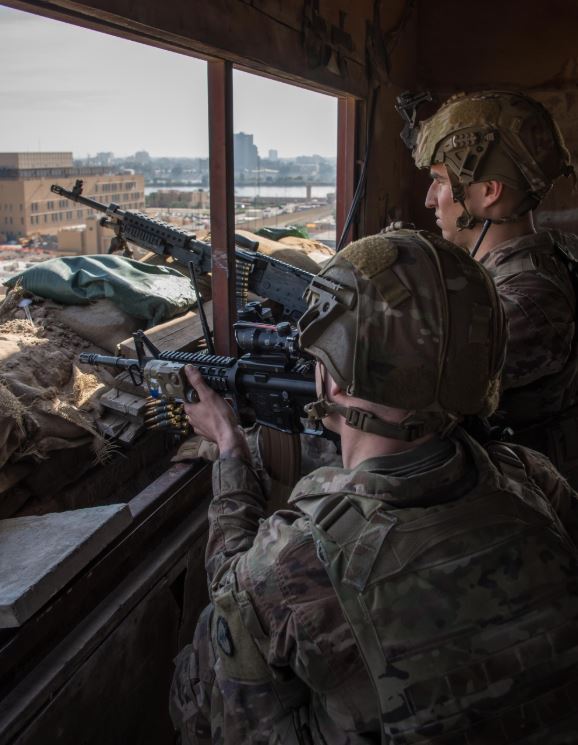
Was Trump Duped by Iran into Attacking the Iraqi Militia?
Was Trump Duped by Iran into Attacking the Iraqi Militia?
Iran Benefits From New 2020 Tensions In Iraq
With the retaliatory air attack on the Iraqi Shiite Militia Kata’ib Hezbollah on December 27, was President Trump playing into the hands of Iran and Iran’s Revolutionary Guards?
Logic and the resulting issues following the airstrikes indicate that the U.S. attack was exactly what Iran wanted and needed. Let’s look at the facts of the case:
Kata’ib Hezbollah is a pro-Iranian Iraqi Shiite militia that is part of a larger umbrella group of Iraqi militias nominally operating under the authority of the Baghdad government in the war on ISIS. Kata’ib Hezbollah, and many other Shiite groups in Iraq are closely aligned the Iran.
On December 27, Kata’ib Hezbollah launched a barrage of over 30 107mm rockets on the K-1 military base near Kirkuk that houses Operation Inherent Resolve (OIR) Coalition forces, including Americans. Kata’ib Hezbollah has launched rockets at other bases with U.S. forces in Iraq recently, including an attack on U.S. forces at the Baghdad airport earlier in December, but these attacks did not result in casualties. This time, their attack succeeded in killing a U.S. civilian contractor and wounding several two Iraqi and four U.S. soldiers.
President Trump had previously stated, following the Iranian downing of an American drone, that attacks on Americans that result in U.S. casualties would provoke retaliation.
Which leads to the December 29, 2019, U.S. air strikes on the headquarters of Kata’ib Hezbollah near al-Qa’im, Iraq. Other airstrikes targeted two additional Kata’ib Hezbollah locations in Iraq and two in Syria, including weapons depots and command posts, according to a U.S. Pentagon statement. It is believed that 25 militia troops died in these retaliatory strikes. In his statement, Assistant to the Secretary of Defense Jonathan Hoffman explicitly links the Kata’ib Hezbollah militia to Iran and Iran’s Quds Force, stating that Kata’ib Hezbollah is an Iranian proxy.
The Iraqi Shiite community and various Shiite militias responded immediately, with an attack on the heavily-fortified U.S. Embassy in Baghdad that partially overran part of the embassy grounds. The U.S. immediately dispatched 100 U.S. Marines from Kuwait to bolster embassy security, and landed via Osprey VTOL aircraft at the embassy on December 31. (see image below).

Marines Deploy to Baghdad, December, 2019 from MV-22 Ospreys at the U.S. Embassy in Baghdad, Iraq, Dec. 31, 2019. (U.S. Marine Corps/Released)
A further 750 troops from the 82nd Airborne Division were rushed to the Middle East in anticipation of further trouble over New Year’s Eve. The Pentagon also announced another 4,000 troops would be sent to the Middle East within the next few weeks. On January 1, 2020, Iraqi militia commanders ordered their people to leave the embassy grounds, stating that their message had been delivered.
It is very doubtful that an Iranian-supported Iraqi militia would launch rocket attacks on Coalition bases without their patron’s approval. But why would Iran want to provoke an incident in Iraq with the Americans? Why now?
The logical answer is to deflect Iraqi public opinion from the massive ongoing anti-government and anti-Iranian street protests that have claimed more than 500 lives and wounded thousands in recent months in Iraq. Iraqi citizens, both Sunni and Shiite, have been protesting corruption in the Baghdad government, as well as the significant influence Iran has in Iraq.
The Iranians and their Iraqi proxies were hoping that enough attacks would eventually result in American casualties, thus provoking a military response from President Trump that would cause Iraqi public opinion to turn away from an anti-Iranian focus to an anti-American focus.
It looks like Donald Trump played right into their hands, and a new Middle Eastern Crisis may be upon us. Time will tell if this event triggers a larger conflict, or if tensions will ease up now that the embassy protesters have been ordered to stand down by the militia leaders.
UPDATE: On January 2, 2020, the U.S. added to its retaliation by killing a major Iranian military officer, Qassem Soleimani, who was stirring up the Shiite Iraqi militias to attack the U.S.


45 was played but in fairness, Iran is much more savvy than he. The Stain would do well to follow this safety strategy: If he thinks the oroper response is ‘A’, immediately stop. 45 is a human I can’t dare forget, as much as I so never to have known of his existence.